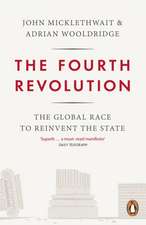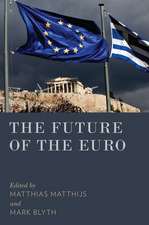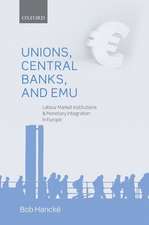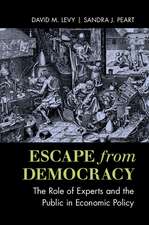Designs within Disorder: Franklin D. Roosevelt, the Economists, and the Shaping of American Economic Policy, 1933–1945: Historical Perspectives on Modern Economics
Autor William J. Barberen Limba Engleză Paperback – 13 dec 2006
| Toate formatele și edițiile | Preț | Express |
|---|---|---|
| Paperback (1) | 331.09 lei 43-57 zile | |
| Cambridge University Press – 13 dec 2006 | 331.09 lei 43-57 zile | |
| Hardback (1) | 728.82 lei 43-57 zile | |
| Cambridge University Press – 27 iun 1996 | 728.82 lei 43-57 zile |
Din seria Historical Perspectives on Modern Economics
-
 Preț: 200.08 lei
Preț: 200.08 lei -
 Preț: 277.57 lei
Preț: 277.57 lei -
 Preț: 307.58 lei
Preț: 307.58 lei - 11%
 Preț: 536.98 lei
Preț: 536.98 lei -
 Preț: 288.62 lei
Preț: 288.62 lei -
 Preț: 277.65 lei
Preț: 277.65 lei -
 Preț: 350.91 lei
Preț: 350.91 lei -
 Preț: 430.14 lei
Preț: 430.14 lei -
 Preț: 289.19 lei
Preț: 289.19 lei -
 Preț: 321.90 lei
Preț: 321.90 lei -
 Preț: 441.58 lei
Preț: 441.58 lei -
 Preț: 400.76 lei
Preț: 400.76 lei -
 Preț: 323.27 lei
Preț: 323.27 lei - 11%
 Preț: 577.27 lei
Preț: 577.27 lei -
 Preț: 357.37 lei
Preț: 357.37 lei -
 Preț: 395.17 lei
Preț: 395.17 lei -
 Preț: 286.69 lei
Preț: 286.69 lei - 14%
 Preț: 787.78 lei
Preț: 787.78 lei -
 Preț: 364.08 lei
Preț: 364.08 lei -
 Preț: 355.54 lei
Preț: 355.54 lei -
 Preț: 357.91 lei
Preț: 357.91 lei -
 Preț: 259.95 lei
Preț: 259.95 lei -
 Preț: 272.75 lei
Preț: 272.75 lei -
 Preț: 442.22 lei
Preț: 442.22 lei -
 Preț: 414.74 lei
Preț: 414.74 lei - 14%
 Preț: 728.05 lei
Preț: 728.05 lei -
 Preț: 266.98 lei
Preț: 266.98 lei -
 Preț: 392.82 lei
Preț: 392.82 lei -
 Preț: 309.49 lei
Preț: 309.49 lei -
 Preț: 349.38 lei
Preț: 349.38 lei
Preț: 331.09 lei
Nou
Puncte Express: 497
Preț estimativ în valută:
63.35€ • 66.32$ • 52.42£
63.35€ • 66.32$ • 52.42£
Carte tipărită la comandă
Livrare economică 07-21 aprilie
Preluare comenzi: 021 569.72.76
Specificații
ISBN-13: 9780521034319
ISBN-10: 0521034310
Pagini: 192
Dimensiuni: 152 x 228 x 11 mm
Greutate: 0.29 kg
Ediția:Revised
Editura: Cambridge University Press
Colecția Cambridge University Press
Seria Historical Perspectives on Modern Economics
Locul publicării:New York, United States
ISBN-10: 0521034310
Pagini: 192
Dimensiuni: 152 x 228 x 11 mm
Greutate: 0.29 kg
Ediția:Revised
Editura: Cambridge University Press
Colecția Cambridge University Press
Seria Historical Perspectives on Modern Economics
Locul publicării:New York, United States
Cuprins
Preface; Guide to abbreviations in citations of sources; Prologue; 1. Stage setting in the presidential campaign of 1932; 2. Curtain raising in the first hundred days; 3. Deployments in the second half of 1933; 4. Rethinking the structuralist agenda (I): the fate of NRA, 1934–5; 5. Rethinking the structuralist agenda (II): the fate of the Agricultural Adjustment Administration, 1934-6; 6. Rethinking macroeconomic strategies, 1934–6; 7. Shock tremors and their repercussions, 1937–8; 8. Toward a new 'official model,' 1939–40; 9. Designs for the management of an economy at war; 10. Designs for the postwar world; Epilogue; Bibliographical note; Index.
Recenzii
'Barber has written a fascinating sequel to his From New Era to New Deal. Together, these books give us a superb - indeed, our very best - history of the role economists played in shaping federal policy between 1921 and 1945. Because he has done his homework in the archives, Barber is able to document the clash of competing ideas within the federal government, to demonstrate the linkages between ideas and policy, and to show us how the experiences of New Deal economists shaped the development of economic knowledge. In the process of explaining how Franklin Roosevelt organized the work of the economists, Barber favors us with a novel interpretation of Roosevelt - as 'an uncompromising champion of consumer sovereignty'.' W. Elliot Brownlee, University of California, Santa Barbara
'A society that grants enormous authority to economists in government had better pay attention to what and how they think. In this fine study, one of our leading historians of economic thought, William Barber, cuts to the core of the connection between economic knowledge and public policy during the New Deal. Barber shows how the dream of a full-fledged 'Fisc' to match the 'Fed' was blighted, and his emphasis on 'economic learning' - theoretical breakthroughs achieved experimentally, through the deliberative processes of governance - adds an important dimension to the typical new institutionalist preoccupation with structural constraints such as federalism. Barber;s shrewd observations about the not-so-positive implications for today of the low-savings, high-consumption lessons the Keynesians taught are thought-provoking. In all, this is an important book for all those interested in the critical debates that shaped the course of modern liberalism.' Mary O. Furner, University of California, Santa Barbara
'A society that grants enormous authority to economists in government had better pay attention to what and how they think. In this fine study, one of our leading historians of economic thought, William Barber, cuts to the core of the connection between economic knowledge and public policy during the New Deal. Barber shows how the dream of a full-fledged 'Fisc' to match the 'Fed' was blighted, and his emphasis on 'economic learning' - theoretical breakthroughs achieved experimentally, through the deliberative processes of governance - adds an important dimension to the typical new institutionalist preoccupation with structural constraints such as federalism. Barber;s shrewd observations about the not-so-positive implications for today of the low-savings, high-consumption lessons the Keynesians taught are thought-provoking. In all, this is an important book for all those interested in the critical debates that shaped the course of modern liberalism.' Mary O. Furner, University of California, Santa Barbara
Descriere
This 1996 book explains how economists helped to shape the American economy during the years of the New Deal and the Second World War.




























